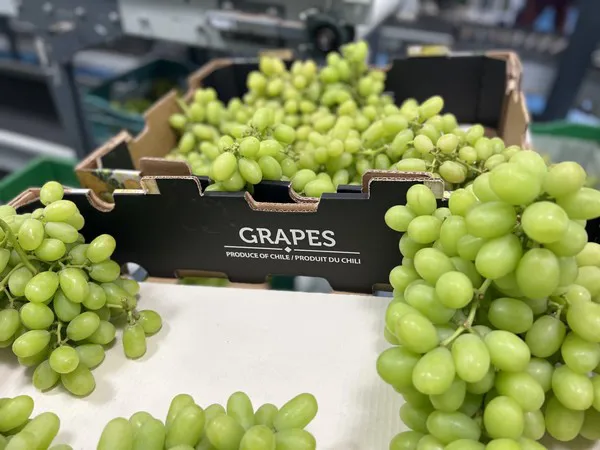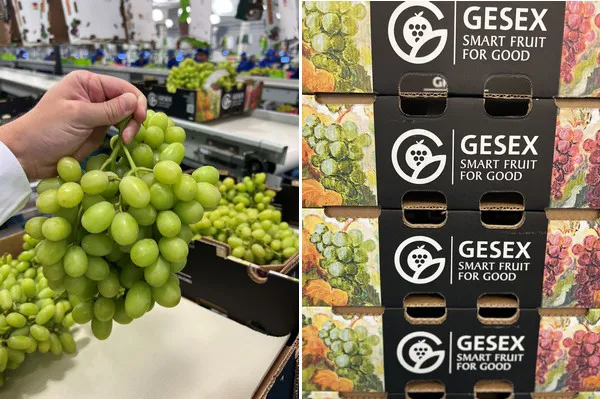It’s going to be a strong ending for Chilean grapes this season. So says Franco Pruzzo of Summit Produce Inc. who says that the import season for the U.S. market is coming to an end. “Chile is already finished and shipped the last grapes two or three weeks ago. Most importers, including us, will have fruit until next week and possibly a few the week after,” he says.
Chile did end its season two to three weeks earlier than the regular season, which had a completely different dynamic this season compared to last year’s logistics issues. “This year due to the heat waves that Chile had across central-south valleys, it was a pretty concentrated season. We had very heavy arrivals through March and that concentration at the end meant the season finished two to three weeks early, factoring in as well the 18-20 percent less volume compared to last year and the same shortage rate reflected on shipments to the U.S.,” says Pruzzo.

Chile will finish with roughly 60 million cartons shipped across all export markets, of which 32 million hit North America, with the U.S. market taking 30 million of them. ‘’Quality wise, we are very happy with the product received. It had a solid shelf-life and lots were able to be stretched through March, April and the first weeks of May. The traditional and patented varieties both performed well. This season showed how important Chile is as a growing region or grape supplier during winter time to the North Hemisphere,” says Pruzzo.
Also coming to an end is the second crop of grapes from Peru, one that began the third week of April and was set to finish the second week of May. However heavy rains due to El Niño had an impact on the crop so growers lost volume and the grapes weren’t in the condition to continue to ship into the U.S. market. That led to a 35-40 percent drop in volume compared to initial estimates. ‘’Fortunately, one of our grower’s partners for this window used plastic canopies that allow them to hold out in weather events like this, without compromising the production or quality.”
Brazilian shipments
Brazil also shipped its second crop until the last week of April. “They usually don’t ship too much because this crop is meant to supply domestic market needs. Besides, this year in March and April, Petrolina had a couple of rain events that affected the first crop forecast as well,” says Pruzzo. He adds that Brazil has a really strong domestic market but if they see that the export markets are having better returns, they look for alternative shipping to the U.S. and Europe in that time. “We are very excited to receive the first arrivals this week. Everything indicates they should land in a quite clean track before Mexico starts crossing with considerable volume,” he says.

The early ending of the Chilean season also means a gap between that and the start of the Mexican grape season. Right now, there are grapes from Jalisco in the market and it is a secondary growing region out of Mexico that largely focuses on producing flavored varieties with a couple of new greens. That crop, which is smaller and produces approximately 3 million cartons, starts to peak between April 5-10th and runs until mid-May.
The Sonora-Hermosillo, Mexico season though is projected to start two weeks later than normal and historically green grape production there begins in the last week of May while red grapes start the second week of June, running until July. Crop-wise, the size is anticipated to be similar to last year--approximately 21-22 million boxes.
As for grape demand, Pruzzo says right now it is steady and strong. ‘’It’s going to be a healthy wrap-up. We hope the trend continues through Mexico and the California crop, revitalizing the category among U.S. consumers,” he adds.
 For more information:
For more information:
Franco Pruzzo
Summit Produce Inc.
Tel: +1 (559) 369-4020
franco@summitproduceinc.com
https://www.summitproduceinc.com/
